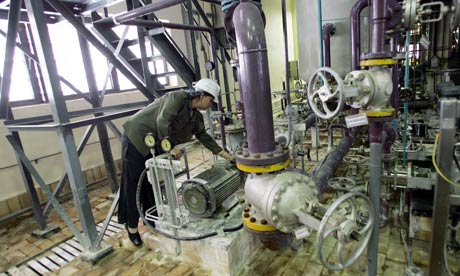November 8, 2015
-
My Nuclear Training Workday
Employees at a nuclear plant quickly learn that those outside of the industry have a difficult time understand just what it is we do during our workday. Even when Administrate Assistants begin speaking about how they file, organize, and route, the various technical documents that support our site, their friends and loved ones begin to look through their eyes and head to the wall behind them, nod and say,
“Uh, huh, well - I’m glad it seems to pay well.”

I’ve never been a big one for talking about my work. I figure that I spent 8 - 12 hours there, doing what others want me to do. When I’m off-site, I like spending my time doing what I enjoy doing like Colonial American History, gardening, visiting the elderly, encouraging the despondent, cartooning, and reading science magazines … which, to date, hasn’t involved my daily work. (I do LOVE my profession as a trainer, so I occasionally follow-up on some of those things off-site).

Given those two truths as backdrop, I realize that I probably should offer some idea of what I do, since it does occupy a great deal of my week and provides for food and shelter and nice things in my home. I think the best way will be for me to describe a typical work-week for training the control room operators.
There are two general categories of nuclear plant operators: licensed and non-licensed. The licensed operators are able to operate controls in the control room that directly affect the reactor, as well as any of the in-plant components outside of the control room, such as valves and switches and breakers. The non-licensed operators can touch nothing inside of the control room, and are generally the hands and eyes and ears of the control room operators in all the rooms inside the plant and pertinent areas outside of the plant (e.g., switchyards).

Both of these categories are also subdivided. The non-licensed operators (“NLOs” … because we love acronyms) have “UOs” (Utility Operators) and “AEOs” (Auxiliary Equipment Operators). Essentially, they UOs are brand new employees who are learning the ropes and do simple tasks in the plant. The AEOs are senior non-licensed operators who are qualified to do anything outside of the control room.

The licensed operators are subdivided into “ROs” (Reactor Operators) and “SROs”) Senior Reactor Operators. The ROs operate the switches in the control room, but do not make procedural decisions or apply various technical limiting conditions of operations. The SROs are the supervisors who are licensed to operate the switches, but usually give the ROs that direction and generally provide the supervisory guidance necessary for safe plant operation. There are more subcategories within the SRO ranks … but enough of that. I imagine that some of you may already be seeing the wall behind this computer screen.
Enough backstory.
What do I do?
I am a Licensed Operator Training Instructor. I teach the ROs and SROs - the Licensed Operators, who are also referred to as the “Control Room Operators.”
Since they are on shiftwork, they rotate into their “Training Week” every 5 weeks. The days look something like this:
Monday: The crew is off, since they work 12 hour shifts. This is they day we instructors typically have our weekly meetings and prepare for the next few days.
Tuesday: Classes in the morning, “as found” simulator evaluations in the afternoon. The “as found” simulator evaluations have elements that were trained on in the previous cycle. The crew is presented with various failures that require specific responses from them. If they do well, they pass. If they don’t, they fail. Failure removes them from watch-standing duty, which means that they can’t do work in the Control Room until they’ve been remediated and re-evaluated and pass. Typically, the re-evaluation is scheduled for Friday of the training week, with remediation training sessions squeezed in.
Wednesday & Thursday: Classes in the morning and simulator training sessions in the afternoon.
Friday: Written exam in the morning and “dual unit” or other unique simulator training scenarios in the afternoon.
If a person fails the written exam, they are taken off watch-standing duties until they are remediated and pass a re-take exam. Same is true if their overall average falls below an 80% (passing rate). Typically, the student will take the exam on the following Monday.
We have two nuclear plants our site with two separate control rooms. (Some sites have one control room for both plants.) In “dual unit” training sessions, we present the crew with a problem that affects both plants, like grass coming into the lake-water intakes, or storms, or loss of off-site power supplies.

My role in all of this is being a part of the team of instructors. We all teach some of the classroom topics. This cycle, I have Reactor Theory and Final Safety Analysis Report as topics.
Exciting! Right?!
We all either evaluate or help with running the simulator for the “as found” evaluations. We all teach sessions in the simulator. If we are not teaching, we are usually developing materials for the next cycle of training.
Size of crews determines how many sessions we have to give; sometimes it’s two and sometimes it’s three. When we teach determines when we come into work and when we leave. Typically, we don’t have to be in earlier than 6:30 or later than 5:30, but that too, varies. Usually, I work from about 7:15 until 3:45.
So there you have it - my average day at work.
Comments (5)
I like that there is a rhythm and flow to the training. My training schedule is so random! I'm hoping the surgical course curriculum is approved and I can start scheduling the classes weekly as needed to get all the people in compliance and documented!! It should keep me very busy!!
Your work matters. Teachers are important.
Can you tell us about that little cutie eating his fingers?
Also, I'd love to see more of your original cartoons.
@Crystalinne: the tot is but a link to a child with a cute face.
@murisopsis: Definitely a rhythm. Like you, I appreciate the odor. I will say that it's a bit on the extreme, though. I would appreciate a little more flexibility with all of it.
@BookMark61: haha! Sometimes training does stink!
Comments are closed.